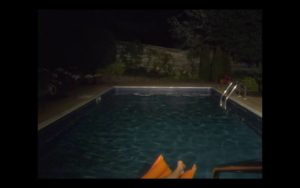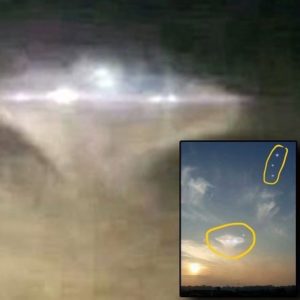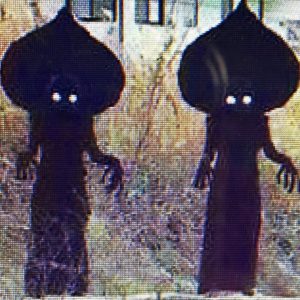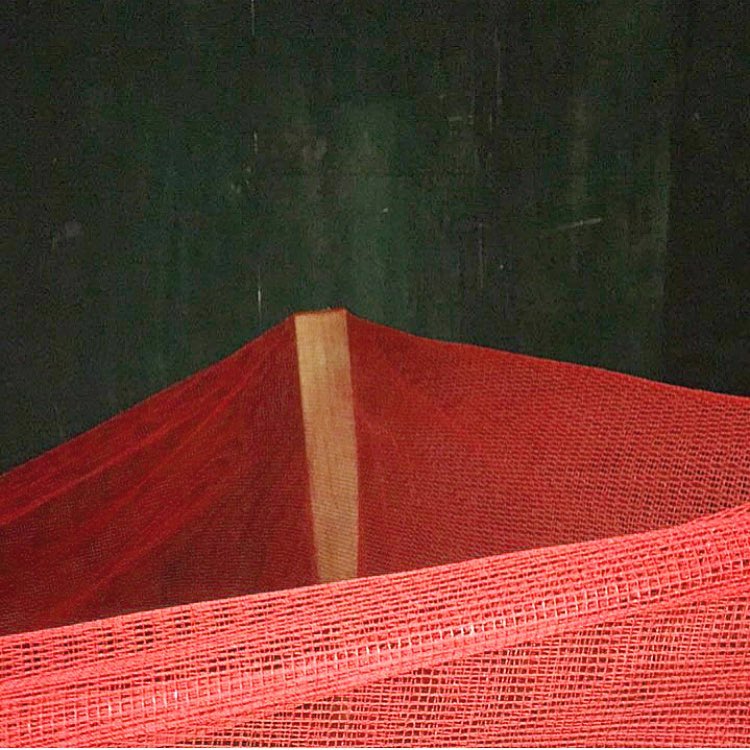A conversation with Ryan O’Toole.
Kasie Wilcox @kasie_wilcox

Ryan O’Toole is a filmmaker from Fredericton, New Brunswick. Since 2011, Ryan has made five theatrical films and a number of short video pieces. His works have a foot in narrative cinema, and while exploring potential overlaps into experimental video, they share part in an ongoing investigation of the aesthetic boundaries of film media as modes of storytelling. His current video project, titled Further Than The Eye Can, is developed in residency at Connexion Artist-Run Centre for Contemporary Art, and deals with an increase in militaristic and survivalist ideology in the design of domestic spaces, noted by the artist in his surroundings. His work has been showcased at various film festivals, including the Cannes Film Festival and the Toronto International Film Festival, and broadcast on national television.
Ryan is participating in Limited Time Offer, a pop-up exhibition and residency program hosted by Connexion ARC. Limited Time Offer works outside of traditional exhibition strategies by activating Connexion’s current shared workspace into a temporary gallery. Projects will be installed for 72 hours only, showcasing artistic production completed by artists-in-residence over the months of July and August, on view from August 25 – 27.
Kasie Wilcox: Tell us about the project you’re developing during your residency with Connexion.
Ryan O’Toole: Further Than The Eye Can See was conceived as a feature length film set in a near future New Brunswick, following an environmental disaster that resulted in a mass migration out of the province, except for a few families and groups of people. The story is centered on a man who lives with his aging parents. He is searching for his long lost brother, and he starts to find these strange DVDs in places like the woods or in a field. The DVDs are dirty and covered in gunk, and so he brings them home and cleans them off, then watches them in secret. They are diaristic, almost propaganda-like videos that reveal a cult operating somewhere in the province. They are mysterious and frightening, to the point he has a physical reaction to watching them. The videos depict this sort of mysterious substance that the cult is drilling for, but he’s never seen it before—it’s not oil or anything familiar. It’s almost extraterrestrial or mutant.
RO: The video I’m developing for my residency project is an attempt at producing the contents of one of the DVDs that the protagonist finds, which may or may not be in the feature film in the end. It’s based in the same world but also operates as a stand-alone short video. I’m exploring the feeling, themes and visuals I want present in the larger project in a condensed manner.

KW: What attracted you to working from the idea of an environmental disaster?
RO: Nothing explicitly attracted me to that idea. A lot of visuals started coming to me that I wanted to make sense of. So I let them develop into their own narrative, which is how I typically work.
KW: In a way, you can say that you are using sci-fi or a post-apocalyptic setting as a hyperbolic stage?
RO: I guess you could call it an excuse, to do things that you might not be able to get away with, whatever that means.
KW: Is creating a suspension of disbelief is important for you in your working process?
RO: I don’t necessarily think that everything needs to come out as a narrative, but as an artist I really do feel bound to narrative. I feel like I use narratives as a framework for visuals. I guess the idea for me and what I’m always trying to aim for, is for the form to be the content, and if I listen to myself and only go off of visuals in my mind, they give me a certain kind feeling, and I record those and I let them transform into a story. It’s like a container for all of the visuals that give me the particular feeling I’m chasing.
KW: As an artist who works with framing ideas into narratives, how important is having a human element in your work? I’ve noticed that characters are a prominent aspect to your work.
RO: I guess that is something I’m exploring with this project because I’m choosing to cut out all of the character elements and seeing how those inhuman things work on their own. It will be interesting to see if there is any emotional response in this stand-alone work. I don’t think it would be the same with characters, and so it will likely result in a colder type of work.
KW: Is the emotional aspect – a viewer having a specific emotional reaction – is it relevant to the success of the project? I think about the traditional movie-goer experience, when a viewer goes to the movies and dislikes the movie they see, it’s a considered to be a bad movie and also a bad experience, and then they wish they could get their money back, and then finally it becomes a wasted investment for the viewer, because it wasn’t entertaining for them. How do you feel about working in a medium when people have expectations, and with making work that doesn’t leave people with a clear-cut set of guidelines, and there is some ambiguity involved?

RO: A film eliciting an emotional reaction from a viewer is usually a good thing, I think, even if the emotions they’re feeling aren’t necessarily enjoyable or what they expected. There are of course exceptions to this statement. But yeah, I don’t know, it’s such a complex topic. I can’t really give you a definite answer, unfortunately. In terms of my work, I try not to concern myself too much with how it’s going to be categorized or labeled until it’s finished.
KW: I really enjoy that you make films in New Brunswick and about New Brunswick, and I find them refreshing. At times I get the sense that there is an opinion that New Brunswick is not a place that can be represented in an interesting manner without staging it or reframing it. I think it’s interesting that your films are openly exploring and underlying spaces in daily life.
RO: I know what you mean. There are all these maritime film tropes, and I don’t actively avoid them, maybe it’s just the fact I’ve seen them, and I’m like “okay great, that exists”. I think I’m channeling a feeling, more than representing a place in a literal sense. I’m channeling a feeling of New Brunswick by letting an energy get to me, working from that, and then letting it take me wherever it takes me, and I think there is an honesty to that that goes beyond “let’s go shoot on the walking bridge” or “let’s go to the bay of fundy”.
KW: I find it interesting because the landmarks are not really relevant; it’s more of the personal experiences in your films that make them relatable and recognizable, I think.
RO: Yeah it’s more about a specific energy and mood, which are both abstract things, but they are very much here. I can feel them and they really inspire me. Even though I don’t aim to make New Brunswick Films, I’m delighted that’s how they end up for people, that’s great, and I guess it’s something I’m proud of.
KW: Coming back to your project, what were some of the feelings and visuals you are using to build this narrative?
RO: I started to notice an increase of survivalist culture bleeding into mainstream living, even in residential areas. I noticed this move towards a less permanent view of living, like they were putting up new buildings that looked and felt completely out of place, and were cheap in this kind of way maybe a military encampment might be. There was this feeling of dread for me, this kind of lack of investment in the future. To me it suggested an unspoken uncertainty in the existence of the future. And then there were things like, the rate of seeing military and hunting camo, an emphasis on stocking up on goods, police cars that look like military vehicles. Some of this probably sounds silly, but I think the feeling is larger than the sum of its parts.
RO: It almost suggests a threat to me, what are we protecting ourselves from? Why are we gathering all of these resources? Are they running out? And why are we treating our shelter in this militaristic way? I think it’s such an abstracted thing that many people don’t really think about but it was something that I was feeling. It’s something I’m trying to explore in this film and it almost takes on the form of horror. This project is definitely a grotesque reimagining of those ideas and their textures, but it’s an expression of them too. I think it’s something beyond uncertainty.

KW: What do you think about the absurdity of fear?I think about when someone feels anxious, and they know what they are experiencing is not necessarily real, but there’s still a lot of validity in their feelings, as well as in the absurdity of it.
RO: There is this really great quote from a book that is in my bag but I’m not going to grab it, something along the lines of “there is more truth in distortion than there is in literal representation”, and I guess that is how I think about this project. I’m not interested in literally imagining what’s going to happen to us down the road or how this fear is going to manifest itself but I find it absolutely engaging to let all of this take me way far off and see where I end up, in hopes that it taps into that original feeling in the form of something unfamiliar. I think, for me, that’s the most valuable way to explore any project, and most things.
An artist talk and open discussion with Ryan O’Toole will be held on Thursday, July 27, from 7:00 p.m. – 9:00 p.m. at 65 York Street, where he will be discussing his project, working process and the poetic potential of lo-fi digital textures in narrative film. Learn more about Limited Time Offer and Connexion ARC, visit connexionarc.org. Follow the artists-in-residence progress on Instagram @connexion.arc
July 16 – 29 》 Ryan O’Toole
July 30 – August 12 》 Melissa McMichael
August 13 – 25 》 sophia bartholomew & Rudi Aker
This project is presented with the support of Sixty-Five York Creative Studio and shiftwork collective.
Kasie Wilcox is a New Brunswick-based multimedia artist and director of Connexion Artist-Run Centre for Contemporary Art, in Fredericton, NB. Her practice explores consumer media and digital services to present artwork, in the forms of books, zines, video, objects, and virtual spaces. Recently she introduced a social dynamic to her work by collaborating with artists, writers, and musicians, to present performances, installations, publications, and a dance party.




